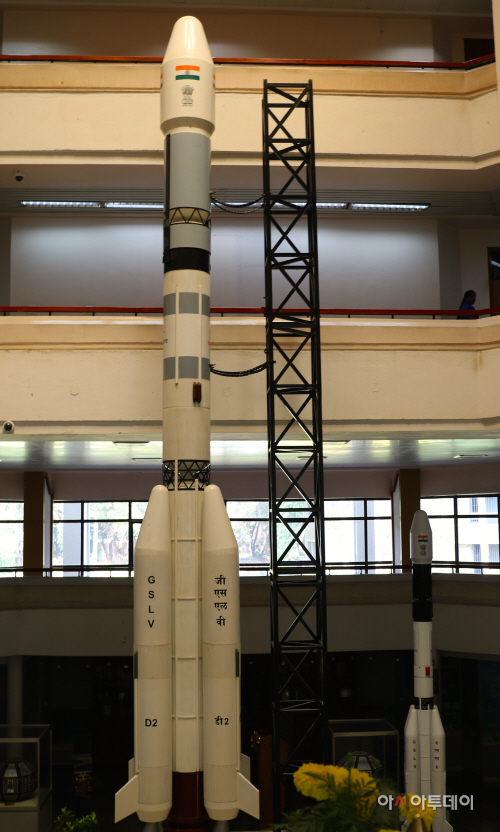 A Geosynchoronous Satellite Launch Vehicle (GSLV) model at the entrace of the Indian Space Research Organization (ISRO) headquarters located in Bengaluru, Karnataka, India./ Photographed by Ha Man-joo A Geosynchoronous Satellite Launch Vehicle (GSLV) model at the entrace of the Indian Space Research Organization (ISRO) headquarters located in Bengaluru, Karnataka, India./ Photographed by Ha Man-joo |
By Ha Man-joo, India correspondent, AsiaToday - The Indian Space Research Organization (ISRO) is building a rocket with a capacity to launch satellites weighing 10 tons into space, according to reports by local media outlets on Wednesday. This is 5 times more than the capacity of the space agency's geosynchronous satellite launch vehicle (GSLV MK-2) that can carry satellies weighing only two tonnes.
The proposed rocket would be powered by a semi-cryogenic engine, which runs on kerosene and liquid oxygen (LOX). Semi-cryogenic engines are environment-friendly and reduce the cost of launches significanly. The design process for the engine has been completed and it is being built by Godrej Aerospace, which also makes the Vikas engines.
"Once we have this engine, India will have different level of launch vehicles possible. If we combine the semi-cryogenic engine with the CE20 engine that is currently being used, it will have a payload capability of 10 tonnes," said S. Somanath, project director of this project.
Last year, ISRO tested a demonstrator of the GSLV MK-3 designed to carry four-tonn class satellites into space. It plans to launch a full-fledged 4-tonne rocket with a communication satellite next year.
Till date, India has successsfully launched 50 satellites. Due to its relatively lower cost and higher success rate, India has been receiving lots of requests from foreign governments and companies for commercial satellite launch business.
ISRO is plannning to lanch fifth satellite for its satellite-base air navigation services GAGAN (GPS Aided Geo Augmented Navigation Satellite System) on January 20.
Most Read
-
1
-
2
-
3
-
4
-
5
-
6
-
7





















